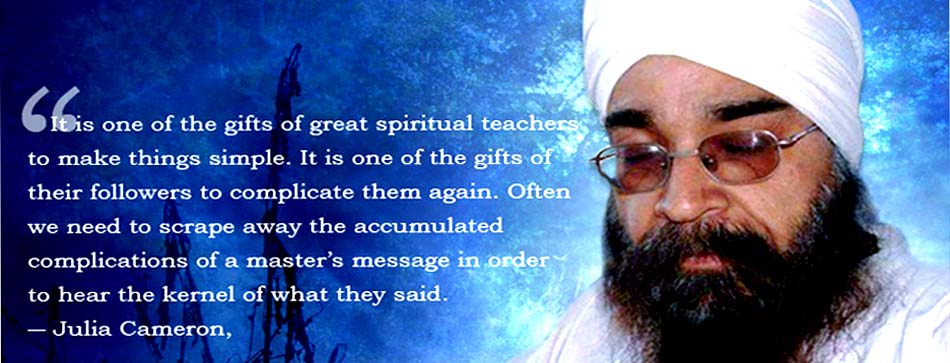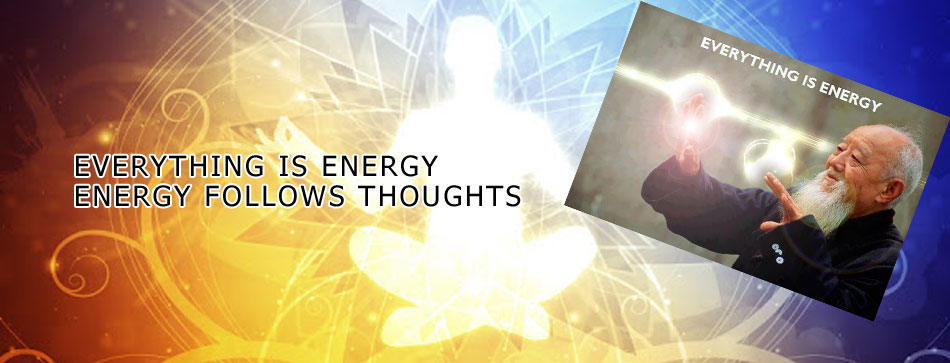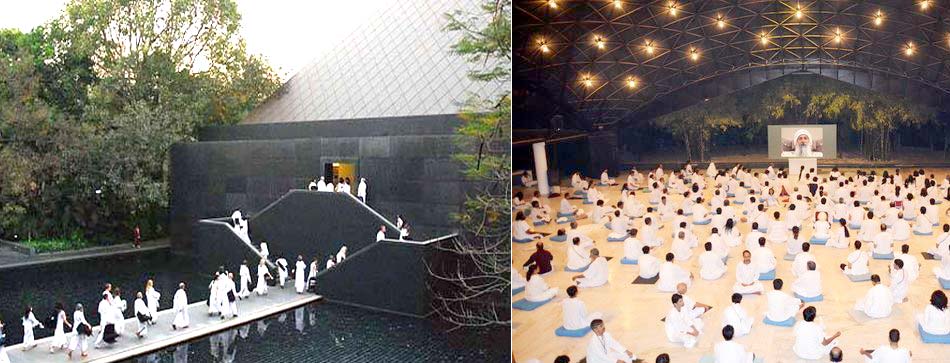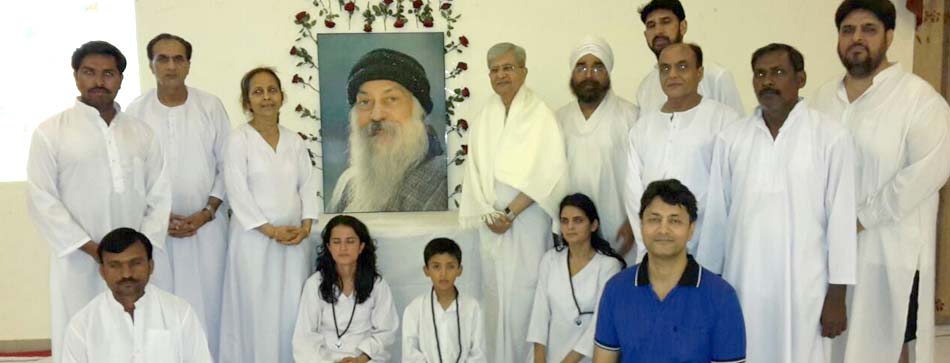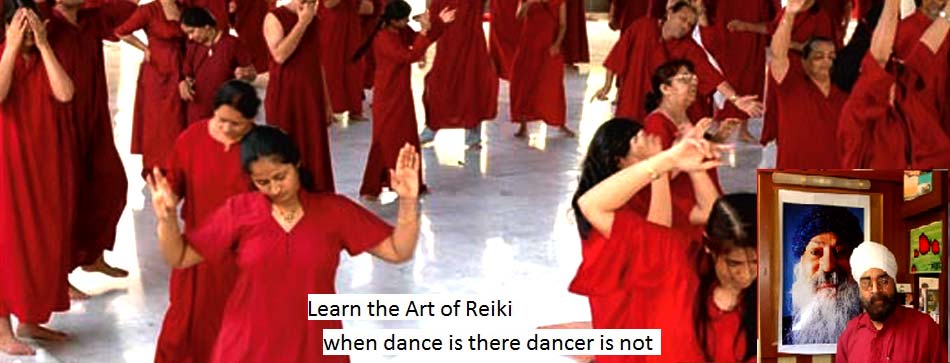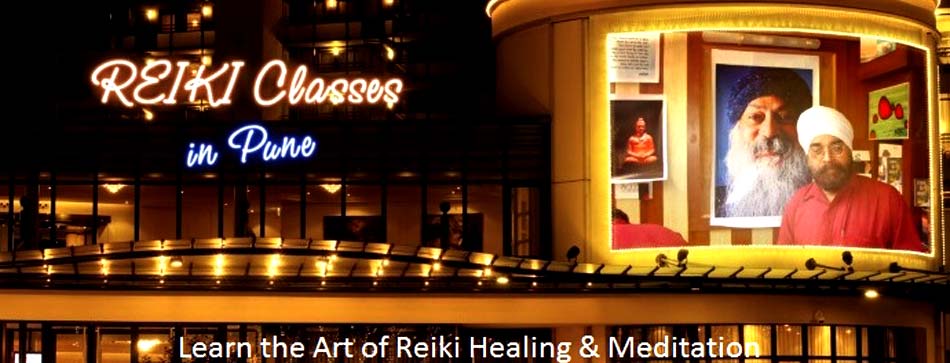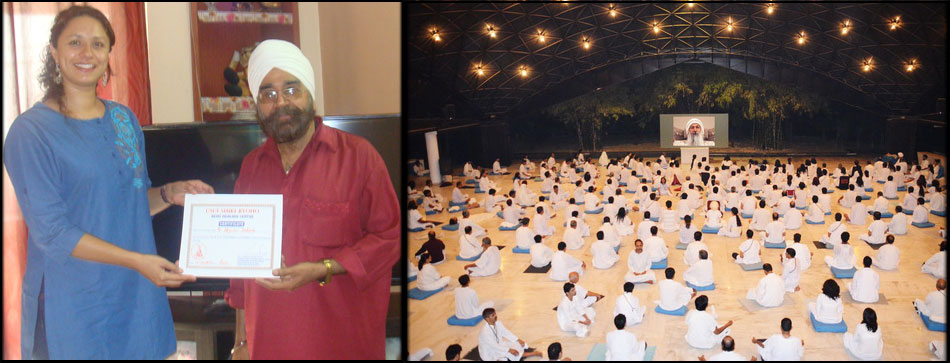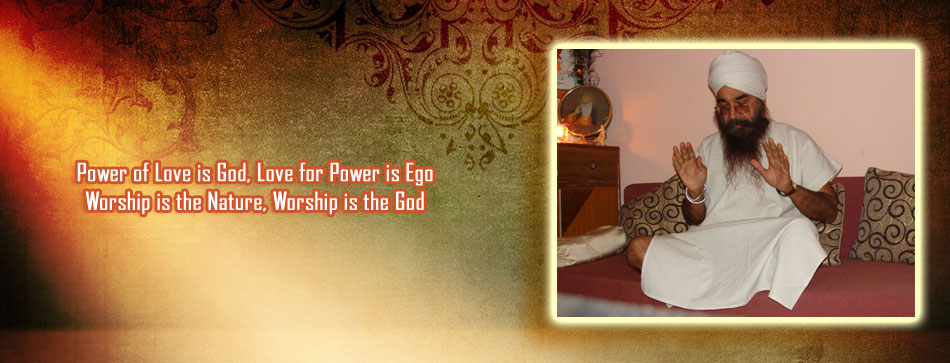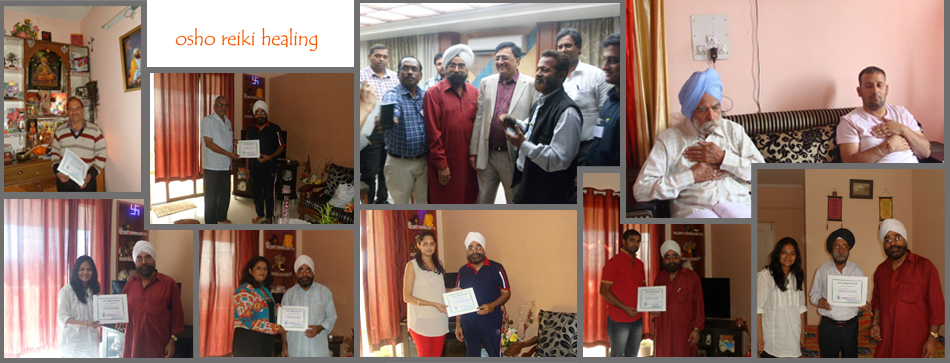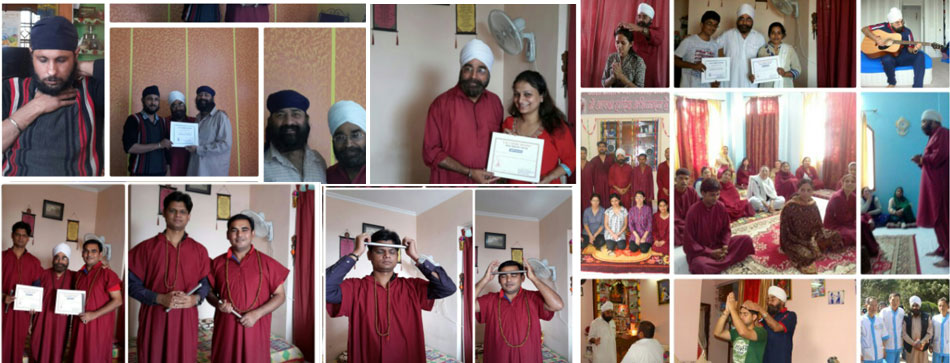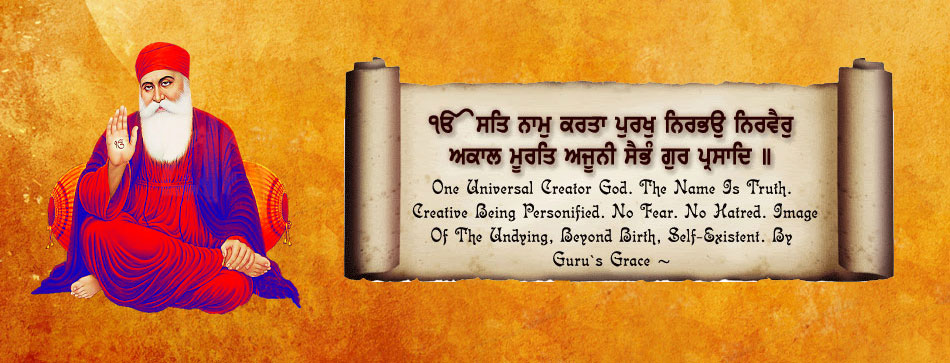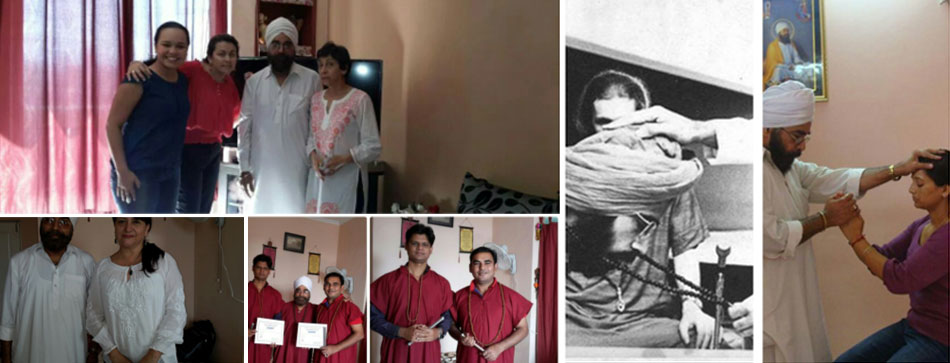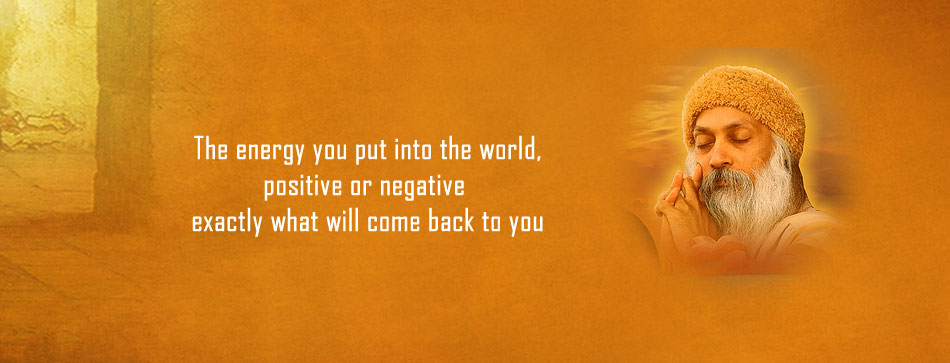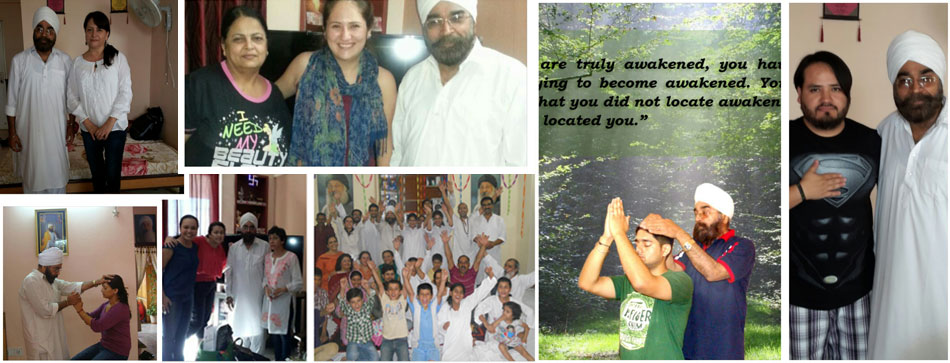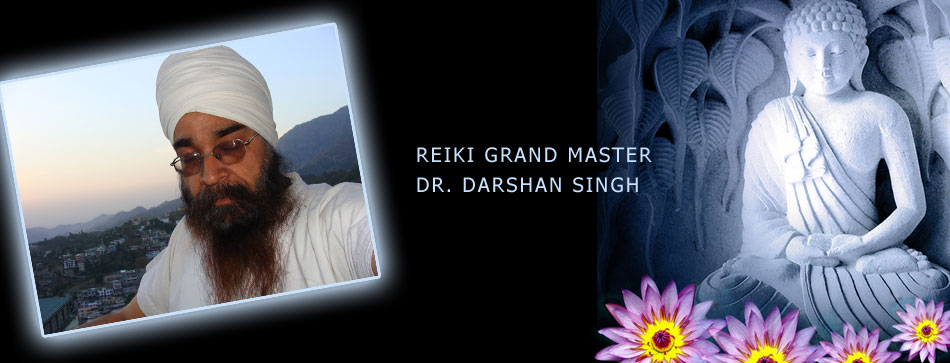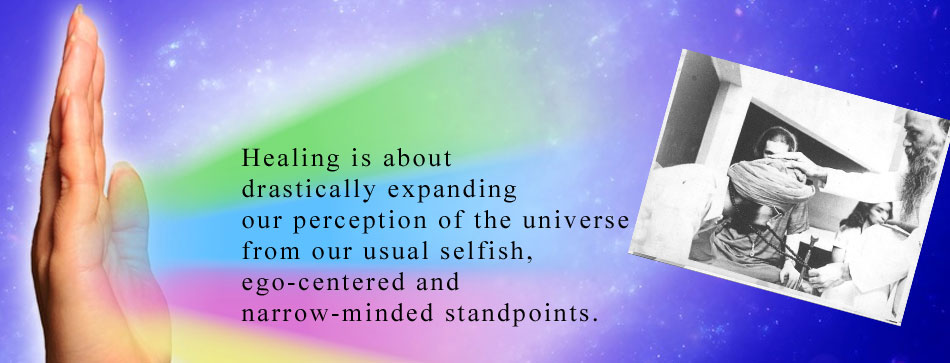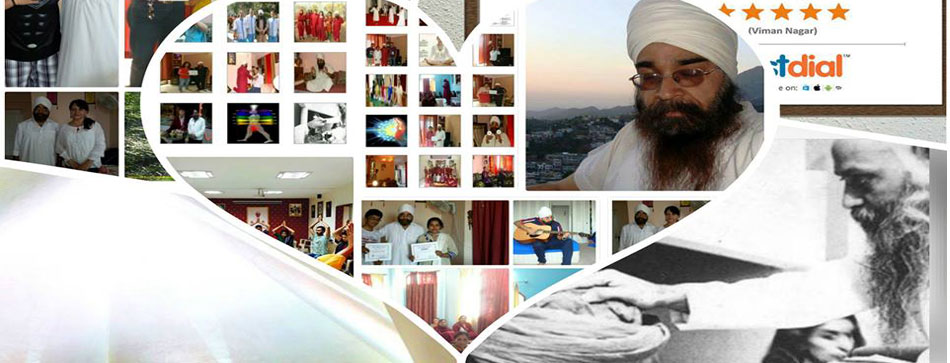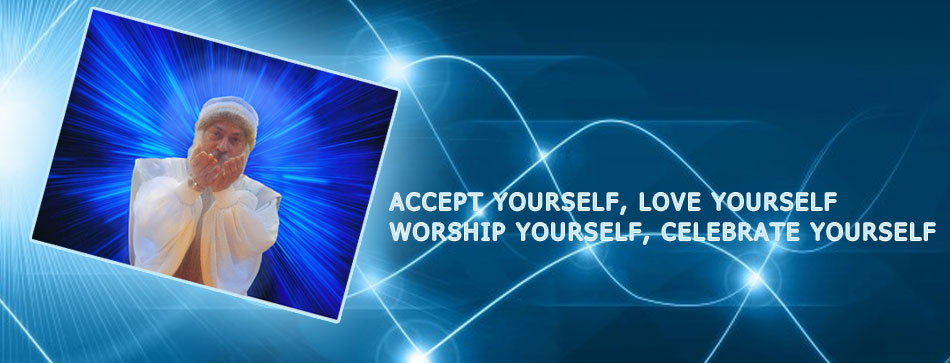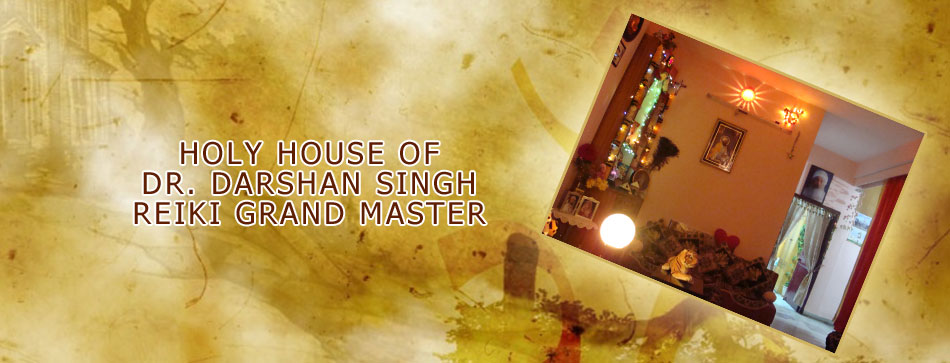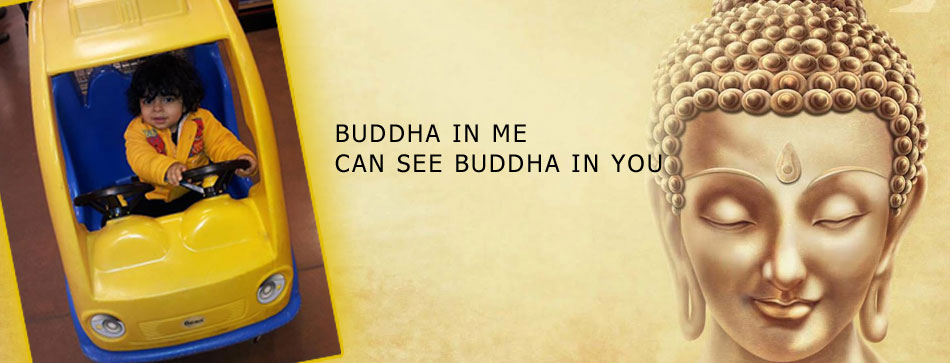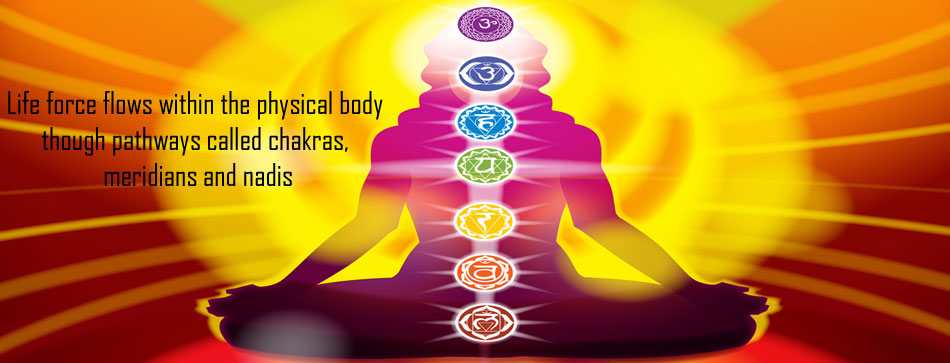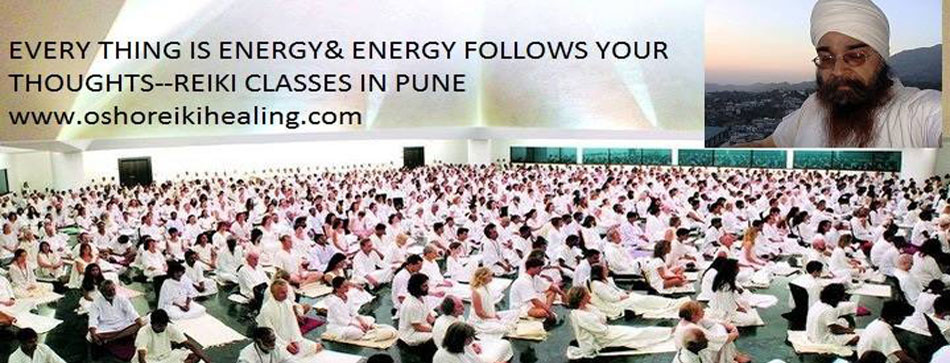Meditation Questions & Answers
Meditation is like a gateway leading from normal day-to-day awareness to a higher state of consciousness. Swami Sivananda believed that devoted and deep meditation was the surest way to the deepest experience of one’s essential being. Apparently in his early days of spiritual practice he was meditating eight, ten or maybe even twelve hours a day.
Meditation begins with interest-being very interested in going beyond the mind, and interest in wanting to know what is ultimately true. Or, the practice could start with a more humble interest: “Let me feel a bit of peace.” According to Gurudev whatever the starting point, meditation needs to be carried on regularly and as often each day as is possible.
No one ever said meditation would be easy! Arjuna said to Krishna in the Bhagavad Gita that, “I find the mind to be as hard to control as the wind.” Sri Krishna assured Arjuna by saying, “The mind can be controlled through dispassion and repeated practice.” Swami Sivananda was a fountain of encouragement and inspiration. “Never despair,” he would say. He knew that meditation would provide great rewards for the devotee who persevered.
Meditation is one spiritual practice, which has a very widespread appeal. On one hand the modern man takes up to meditation for protecting himself from the ill effects of his life style of hurry, worry and curry (fast food and spices). On the other hand, ‘meditation is a universal common process which unites the entire world fraternity of spiritual seekers’ (Swami Chidananda); and so, all the seekers practise it. Meditation is spiritual practice (sadhana) common in various paths of Yoga, common in major religions and faiths. So there are different types of meditation to suit an individual sadhaka’s temperament and sadhana.
“Just as you require food for the body, so also you require food for the soul in the shape of prayers, japa, kirtan, meditation, etc. The food for the soul is more essential than the food for the body.” (Swami Sivananda). Meditation, as such, has become a part of daily routine of all those who have some concern for their soul, who are conscious of their long-term welfare – their spiritual ascent.
Maharshi Patanjali propounded the eight-stage Raja Yoga in his well-known sutras of Yoga Darshana. The sixth rung of Raja Yoga is dharana (concentration), and is followed by dhyana (meditation) and samadhi. Though a very large number of people are eager to know about meditation and understand it properly, very few of them might have studied this extremely difficult text. We have tried to explain in a lucid manner various aspects of meditation, namely:
- Meaning of the concepts of concentration and meditation,
- Where to concentrate?
- Pre-requisites of Meditation,
- How to Meditate?
- Practical Hints,
- Obstacles to Meditation,
- Benefits of Meditation,
- Experiences in Meditation
- Indicators of Progress in Meditation.
Sadhaka : Will you please explain the concepts of dharana (concentration) and dhyana(meditation)?
Gurudev : Dharana is fixing the mind on an idea or a point or an object, either internal or external. You will have only one vritti or wave in the mind-lake; all other operations are suspended or stopped. Concentration is steadfastness of mind (when) you remove all causes of distraction. Dhyana or meditation is the keeping of the flow of one idea with continuity as unbroken as the flow of oil. Meditation is the keeping up of an unceasing flow of God-consciousness.
Dharana means holding the mind fixed at one point and keeping it held for sufficient length of time. If you can fix it upon a fixed point within for period of 12 matras (roughly 12 seconds), it is counted as one dharana. It is a mental training. For successful concentration:
- The mind should be subtle;
- It should be sattvic (pure);
- You should have dispassion;
- You should have a persistent endeavour;
- You should take sattvic diet.
The authentic pure meditation process is a communion between the individual and the Universal Being – an inner linking with God, the flow of human consciousness towards the eternal Consciousness, your overall self-unfoldment. Meditation is the highest and noblest exercise of the supreme prerogative and blessedness of human birth, a continuous process of rejecting the call of the non-eternal, and a resolute, a persistent and an insistent opening of ourselves to the Atman, to turn away from the unreal and move towards the Real. Meditation is intensified living in the Spirit.
WHERE TO CONCENTRATE
Question -On which object the mind should be fixed?
Answer :- Direct the mind away from the objects of sense, and direct it slowly to the wholeness of the Soul. The main forms, to put them in an ascending order, would be:
- Concentration on an external point, symbol, image or picture;
- Concentration on an internal point, symbol, image or picture;
- Concentration on the Universal Existence.
Question: Will you please explain this in detail?
Ansawer: There can be no concentration without something upon which the mind may rest. The mind can be fixed easily on a pleasing object.
External point of focus: You can concentrate externally on the picture of any devata (deity), on the tick-tick sound of a watch, on the flame of a candle or a black point on the wall or a flower or any pleasing object.
Internal point: You can concentrate internally on any of the seven plexus or charkas or centres of spiritual energy, or at the tip of nose or tongue.
Cosmic Consciousness and related concepts: vedantis try to fix the mind on Atma, the inner Self. Meditate on the light that is shining in your heart. Meditate on the nature of the Self: “I am Sat-Chit-Ananda, Existence- Knowledge-Bliss Absolute”. Meditate on the divine qualities.
Stick to one centre, cling to it tenaciously.
Meditation is gathering up of the mind and focussing it at one point. As an exercise in concentration, you can make that focal point on any object. The meditation upon the personal God with form may gradually and naturally give place to meditation on the impersonal Absolute.
In classical meditation that focal point is always the Divine Being or your inner Self. The supreme Universal Being is present in you as your true self. The vedantic meditation (is) upon your innermost Reality-“I am Existence-Consciousness-Bliss Absolute; I am an ocean of peace and joy.”
Prerequisites of Meditation
Question : What preparation has to be done to make this lofty exercise of meditation for attaining supreme blessedness successful?
Answer- You have to march step by step, stage by stage. Lay the foundation of yama (right conduct), niyama (observances), asanas (postures), pranayama (regulation of breath) and pratyahara (abstraction). The superstructure of dharana, dhyana and samadhi will be successful then only. You will be able to enter into deep meditation only if you lead a moral life. Purify the mind first through the practice of right conduct. Remove all distractions. Get rid of all vasanas (cravings) and ambitions. Get yourself established in sadachara or good conduct. Have ethical perfection. Purify your heart first through selfless service, recitation of the Lord’s names, pranayama, etc. The mind is ever wandering. It ever runs towards sense objects. Steady the mind through practice of vairagya (dispassion) and abhyasa (concentration). Cultivate burning dispassion, burning aspiration or longing for Self-realisation.
It is very important to have a proper foundation first of all by being established in virtue, in self-restraint, in control of senses and in dispassion; so the importance of ethical perfection. If one becomes a man of self-control and goodness, a man who has overcome desires, then it becomes easier to meditate upon higher, subtle object. If a transformation has not been brought about in the lower nature and if you try to force the mind towards meditation, what happens? There is a conflict inside. It tends to result in various undesirable results.
How to Meditate?
Question – Kindly give me some practical hints and guidance on how to meditate.
Answer – Meditate regularly in the early morning, which is very favourable time for spiritual contemplation. The mind is calm, pure and quite refreshed. The mind is like a blank sheet of paper and comparatively free from worldly samskaras (mental impressions). It could be moulded very easily then. The atmosphere is charged with more sattva (purity) at this particular time.
Have a separate meditation room under lock and key. Do not allow anyone to enter the room. Or convert by means of screens, a corner of a room into a meditation chamber. Spread a fourfold blanket and over this spread a piece of soft white cloth. Face east or north. Keep the head, neck and back in one straight line. Sit on padma/siddha/swastika or any such asana. Burn incense there in the morning and evening.
When you are a neophyte in meditation, start repeating some sublime slokas or stotras (hymns) for 10 minutes. This will elevate the mind. You must have a mental image (concrete or abstract) of God or Brahman before you begin to meditate.
Lord Jesus says : “Empty thyself and I shall fill thee.” Maharshi Patanjali says: “Yogash-chitta-vritti nirodhah – Yoga is restraint or annihilation of all mental modifications, of all mental functions”(1.2). Detach the mind from the objects. Plunge yourself into the depths of your heart and rest in Atman. Don’t store in your brain unnecessary information. Learn to unmind the mind. You will have to disregard and ignore worldly thoughts. Be indifferent. The vedantic formula to drive away emotions is: “I am a sakshi (witness), of mental modifications.” Do not identify yourself with these (worldly) thoughts. They will vanish gradually. Do not wrestle with the mind. Avoid tension anywhere in the body or mind. Fill the mind with God and God alone. Think gently of the object in a continuous manner. Do not allow the mind to wander away. Saturate the mind with thoughts of God. The other thoughts will gradually vanish.
You should not only have a regular timing but you should also have a fixed place and asana (posture). If the place is kept very pleasant by keeping fresh flowers and burning incense, it will put your mind into a meditative mood. There will not be any distraction. The mind becomes indrawn. Sit in your meditation posture; keep the body erect and straight. Sit steadily without any movement. But always be relaxed. You must be totally at ease.
When you sit for meditation, in the beginning you just sit quiet; get into a mood of calmness. Then try to bring about a sort of channelisation of the thought-flow. Any elevating chant may help you. It should be the same for all days. Mantra-japa produces wonderful spiritual vibrations and is a great help to concentration. It lifts the mind up into a state of subtle awareness of the Divine.
The mind runs from one object to another in a continuous succession. As long as the mind exists, thoughts will be there. You cannot suppress it by force. On the contrary, the thoughts will grow even more persistent and stronger. Instead of meditation, you will be diverting your attention towards these thoughts. You must just ignore them, and should gently once again bring your mind back to the focal point. Carry on this process in a non-violent manner. Gradually make (its) area smaller and smaller till the mind is left with only a single vritti (modification or thought), to the exclusion of other vrittis. Ultimately, when you reach the stage of nirvikalpa samadhi even this single vritti will subside..
You should prepare your mind for meditation by filling it with divine bhava – with a feeling or attitude of spiritual affection. Let the thoughts subside, and then gently lift the mind up, out of the self-awareness, out of the consciousness of its union with its immediate surroundings and body. The spiritual concentration is based on the denial of the individualistic personality by affirming: “I am not this body, I do not belong to this perishable world.I am the soul. I am ever-free, ever-present, ever-perfect spiritual entity.” Try to tell yourself and feel that there is no universe. Efface the universe from your thought. Now slowly begin to negate your personality. Then what is there? When you feel that there is absolutely nothing, slowly bring in the thought: “The Lord alone IS.” Fill the mind with your particular conception of God. These two things – (a) negating the entire world and even your personality, and (b) asserting positively only the presence of the Supreme Being-are powerful helps.
If you are a vedantin, feel that there is only one vast expanse of limitless Existence, unfathomable Peace and infinite Bliss. There is nothing else. Feel strongly the Divine Principle in the innermost centre. Now assert to yourself: “I am ever united with the Being. Om, Om, Om”.
Concentration is one percent a question of theory and ninety-nine percent a question of practice, abhyasa. Daily practice alone will help you. Keep up a link of meditation even while a certain portion of the mind goes on doing ordinary work. This method is called Brahma-chintan or Brahma-abhyasa.
The pinnacle of Yoga is the absorption of the mind in the object of its concentration. The whole technique borders upon an attunement of the subjective consciousness in its wholeness, to the object of concentration. The Yoga system of Patanjali is a gospel on the necessity of severing all relationships on the part of the consciousness in respect of every type of involvement in externality or objectivity. Yama, niyama, asana, pranayama, pratyahara, dharana, dhyana and samadhi are the stages of gradual withdrawal of consciousness from outward contact, and a simultaneous rising into wider and wider dimensions of itself, culminating in Infinitude, which is the quintessential essence. The thought in meditation deepens itself to such an extent that it can have no awareness of anything outside the purview of the object of meditation.
PRACTICAL HINTS
Question : I am grateful to you for explaining the technique of the lofty concept of classical meditation. Will you please give me some more practical hints?
Answer – Take sattvic (pure) and light diet. Take only milk and fruit at night. Read good inspiring, religious books. Have satsanga (association with wise men). Fill the mind with the idea of God and God alone. Saturate the mind with the thoughts of God. Introspect in solitude. Silence the bubbling mind. Allow one thought wave only to rise from the mind. Drive off all extraneous thoughts. Give up planning and scheming.
Shut out from the mind all useless thoughts. Substitute sublime thoughts. Don’t allow the mind to move in the old ruts, grooves and avenues. Generate new divine vibrations and thought waves. New grooves and avenues will be formed now. Positive overpowers negative. Keep yourself always positive. The mind is ever ready to stop you. Don’t hear the shrill voice of the mind. Hear the sweet silent voice of the soul. It will guide you if you are pure and sincere. Your inner Self, the all-pervading Atman is the only Reality, the pure Consciousness. Thou art imperishable Atman. Meditate constantly: “I am the witnessing consciousness, Atman, all-pervading, omnipresent Sat-Chit-Ananda Brahman”.
The spiritual path is rugged, thorny and precipitous. But the reward is very great. You will become immortal. Persevere. Plod on diligently.
OBSTACLES IN MEDITATION
Question – You have warned us that the spiritual path is thorny and precipitous. Will you please elaborately explain the obstacles to meditation? Are there specific remedies to overcome these obstacles?
Answer – The chief obstacles are:
(i) Body : A sickly, dilapidated body stands in the way of yoga-abhyasa. The aspirant should try his level best to keep good health always, by regular exercise, asana, pranayama, moderation in diet, walking, running in the open air and by regularity in his work, meals and sleep. He should always keep up a cheerful attitude of mind under all conditions of life. If the mind is cheerful, the body also is healthy. That is the reason why doctors prescribe laughing three times daily in the treatment of diseases.
(ii) Poor Health : The body is a boat to cross over to the other shore of Immortality. The body is an instrument for attaining Self-realisation. You cannot meditate if you have a weak, sickly body. Take care of the body but have no attachment for it.
(iii) Drowsiness and Sleep: Laziness, half-sleepy state, sleep, laya (mental inactivity), etc. are the products of tamas (inertia). If the body is heavy, if the mind is dull, know that you were sleeping. While meditating, if the body is light, if the mind is clear, if there is cheerfulness, know that you are meditating.
Take only milk and fruits at night. Take the night meals before sunset. Avoid overloading the stomach. Do 10 to 20 pranayamas just before starting meditation. When sleep tries to overpower you, repeat the mantra loudly for some time. Sit in vajrasana. Dash cold water on your face. Do kirtan. Do pranayama.
(iv) Building Castles in the Air : When you constantly contemplate on the meaning of Mahavakyas (great utterances of the Upanishads), all the vishayas (sense activities) – seeing, hearing, touching, tasting, smelling, – will stop. But owing to the force of samskaras (impressions and memories), manorajya (fancies and wild imagination or reverie) will continue. Mind builds castles in the air.
Closely watch the mind. Make it ekagra (focussed) and allow it to rest on the svarupa (real nature of the Self). Be thoughtful, careful and vigilant. Remove the two serious obstacles of drowsiness and manorajya by vichara (enquiry), discrimination, prayer, japa, pranayama, dhyana satsanga, and by light sattvic diet. If you are alert, by protracted efforts and incessant, vigilant svarupa-chintan or meditation on Brahman, you can get over the obstacles of sleep, manorajya, etc.,
(v) Mental Talking : During meditation you will be frequently talking to somebody mentally. Stop this evil habit. Have a careful watch over the mind.
(vi) Dreams In Meditation : Various sort of fantastic dreams trouble some aspirant very much. The presence of dreams denotes that you have not removed vikshepa(tossing of the mind), and that you have not done constant, intense sadhana.
(vii) Doubt : Doubt or uncertainty is a great obstacle in the path of Self-realisation It bars the spiritual progress. This must be removed by satsanga, study of religious books, vichara and reasoning. When a doubt arises whether there is God or not, whether I will succeed in Self-realisation or not, it must be dispelled by well-directed suggestions and affirmations.
(viii) Depression : Very often depression comes in meditation in neophytes owing to previous samsakaras, (subtle impressions) influence of astral entities, bad company, indigestion, and constipation. It must be removed quickly by cheerful thoughts, a brisk walk, singing laughing, prayers, pranayama and a purgative.
(ix) Cessation of Sadhana : Generally, the sadhaka is very enthusiastic in his sadhana in the beginning. When he does not get any result, he gets dejected. He gives up his sadhana completely.
You must develop the virtues of vairagya (dispassion), patience and perseverance to a maximum degree; you must have an unshakable conviction in the existence of God, and in the efficacy of spiritual practices. You must have a strong determination: ” I will realize God in this very birth.” Do not expect anything. Be sincere and regular in your daily meditation and tapas.
(x) Irregularity in Meditation : If you are irregular, if you give up practice for some days on account of laziness, it will be difficult for you to rise up again to the original height. Therefore, be regular. Rapid progress and great success can be attained if regularity is observed by the practitioner. You must keep your mind always in contact with the Brahmic fire of knowledge through constant and intense meditation.
(xi) Kashaya (hidden subtle desires) : Destroy kashaya through dispassion, discrimination, study of books, enquiry, etc.
Another disturbance is desires which you never thought were there and the unconscious ambitions within the mind. They can take endless shapes. You may think that you are meditating, but you begin to imagine this and that – building castles in the air. In the realm of meditation, they work havoc in the aspirant who does not take extra care to keep them at bay. Destroy kshaya through enquiry, discrimination, dispassion, study of books, meditation, etc.
(xii) Memory : Another obstacle is memory, because it is not under your control. When you do not want to remember past things all of them will be disturbing you. In the state of empty mind all vrittis and memories start coming and your imagination starts working havoc.
Obstacles to meditation have to be overcome by a number of methods. The salient ones are: prayer, practice of Divine Name, surrender to Guru, abhyasa and vairagya. If your abhyasa – unremitting effort – is always supported by vairagya, you will be able to overcome the obstacles.
Benefits of Meditation
Question-: Everyone is talking about the importance and various benefits of meditation from different angles. Will you please throw some light on this?
Answer God is immanent in this world. He has hidden Himself and is seated in the cavity of the lotus of your heart. You will have to seek Him through concentration and meditation with a pure mind. This is a real play of hide-and-seek. If you do not practise meditation, the supreme splendour and unrivalled glories of Atma will remain hidden from you. The wise cut asunder the knot of egoism by that sharp sword of constant meditation. Then dawns the supreme Knowledge of the Self, and the full inner Illumination, Self-realisation. Meditation is the only real, royal road to attain godhead – the only road which takes the aspirant direct to the destination of divine consciousness. Meditation is the pathway to Divinity. It is a mysterious ladder which reaches from darkness to Light, from ignorance to Knowledge from pain to Bliss, from restlessness to Peace, from mortality to Immortality.
The more you meditate, the more the spiritual strength you will have wherein you are cleansed of impurities. Be silent. You will be very close to the source, the Atman. Know thy Self. Know That. Melt the mind in That. The Divine energy freely flows from the feet of the Lord to the hearts of sadhakas. This is the action of Grace of the Lord upon the soul in meditation. In that inflowing Grace, there forthwith arises that light. You will enjoy the waves of Bliss and Peace. You will develop a new mode of thinking and acting, and a new view of the universe as God in manifestation.
Meditation acts as a powerful tonic. The holy vibrations penetrate all the cells of the body and cure diseases of the body through the powerful soothing waves that arise during the meditation exercise. Just as you require food for the body, so also you require food for the soul in the shape of prayers, japa, kirtan, meditation, etc. If you are not regular in your japa and meditation, the subtle body will become weak, and your power of resisting the evil thoughts, vasanas and samskaras will be less. Meditation develops strong and pure thoughts and increases sattvic qualities. When the mind becomes pure, it attains the state of steadiness and becomes one-pointed.
Meditation gives peculiar spiritual ananda (bliss), peace, contentment, fearlessness, an unruffled state of the mind in worldly difficulties, steadiness, inspiration, intuitive perception, sattvic qualities, and absence of anger, egoism and raga-dwesha (likes and dislikes). Those who practise concentration can do any work with scientific accuracy and great efficiency. It purifies and calms the surging emotions, strengthens the thought current and clarifies the ideas.
The more the mind is fixed on God, the more the strength you will acquire. It opens the inner chambers of love, the realm of Eternity, etc. It is the sole key for opening the chamber of Knowledge. You cannot compare the Ananda (Bliss) from meditation with transitory sensual pleasure.
Cultivate the flowers of peaceful thoughts of love, mercy, kindness, purity, etc. in the vast garden of your antahkarana (inner being); through introspection; water this garden of mind with meditation and sublime thinking.
Meditation is intensified living in the Spirit. Therefore, through meditation, we should recharge our battery in the intense manner. Meditation should be spiritualizing force for all our life – for all our thoughts, feelings, ideas sentiments and aspirations
Experiences in Meditation
Question: I am having different visions during meditation. Are they only mental illusions or common experiences during meditation?
Answer : The highest Experience – nirvikalpa samadhi – is the same in all aspirants. (Yet) various persons get various spiritual experiences in meditation. It depends upon the temperament of the sadhaka and the mode of sadhana, place of concentration and various other factors. [Some common experiences are as under]
(i) Jerks : Beginners will get jerks in meditation. Meditation brings on changes in the cells of the brain, nerves, etc. Old cells are replaced by new vigorous cells filled with sattva. New nerve currents are formed now owing to the purification of the nadis (tubular astral vessels of the body) resulting from sadhana. New grooves, new channels for sattvic thought-currents are formed. The jerks pass off after some time. Sometimes there is tremor of the body during meditation. When you get these experiences you are progressing. Plod on. Persevere.
(ii) Play of the Three Gunas : During meditation sattva increases. But rajas is ever trying to overcome sattva. Restlessness increases sankalpas or thoughts increase in number. Thoughts of action manifest; planning and scheming come in. Take a little rest. Again do japa, pray and then meditate. Take a little walk. When sattva increases through enquiry, vigorous sadhana and greater vairagya, this disturbance will vanish and you will experience deep meditation.
(iii) Sound : Hatha-yogis and laya-yogis hear anahata or Om sound. Some times they hear sounds of bells, drums, flute, lute or veena.
(iv) Light : Some raja-yogis see brilliant lights during meditation in Ajna – the space between the two eyebrows. A small pinpoint of light will begin to grow as big as the sun. Sometimes they see coloured lights.
(v) Darshan : Bhaktas get darshan of their Ishtam or tutelary deity. Sometimes you will feel presence of your Ishtam near you, and you will find that the image is becoming more and more luminous. The image will begin to appear as living when you practise regular meditation. Thoughts of God will start spiritual currents in the body.
(vi) Cosmic consciousness : Advanced yogis experience Cosmic Consciousness, Cosmic Vision. This is a rare experience. It is like a glimpse in the beginning. The attainment of cosmic consciousness is permanent in realized souls. You will feel that the world is nothing but pure Consciousness. You will feel that the Lord is sporting in all things. You will begin to love every creature.
(vii) Losing Body consciousness : During deep meditation, the aspirant forgets the external world and then the body. You will not hear any sound. The consciousness of egoism will gradually vanish. You will enjoy inexplicable joy and indescribable happiness. Gradually, reasoning and reflection will cease. You will enjoy supreme Peace. In this silence is the supreme Light of lights. In this silence is the undecaying Bliss.
(viii) Other experiences:
- Divine smell/taste and vision of the Lord in the dream are some of the preliminary spiritual experiences.
- When the mental peace is attained, there is no hankering after sense-objects. In that peace all pains are destroyed.
- When you enter into deep meditation, pulse rate may come down to 30. The onlooker may not be able to perceive the breathing.
Progress in Meditation
Question : Thank you very much, Gurudev, for this wonderful information. It seems I have a long way to go. But I am now more determined to pursue the path with perseverance. Will you please tell me if there are any indicators showing progress on the path, and success in meditation?
Answer-: These are the signs that indicate that you are growing in meditation and approaching God: Contentment, an unruffled state of mind, cheerfulness, patience, decrease in the excretions, sweet voice eagerness and steadiness in the practice of meditation, disgust for worldly prosperity or success, disgust for company, a desire to remain alone, one-pointedness of mind, dispassion and discrimination, serenity, self-restraint, ahimsa (non-injury), truth, purity, forbearance, forgiveness, absence of anger, a spirit of service and sacrifice, love for all, desirelessness, etc. You will become ‘I-less’ and ‘mine-less’. Dehadhyasa – attachment to the body – will gradually dwindle. You will feel, ‘all are manifestations of the Lord’. You will behold God in every object. You will always be cheerful and happy. The Name of the Lord will always be on your lips. The mind will be ever fixed on the lotus feet of the Lord. You will actually feel that sattva (purity), light, bliss, knowledge and love are flowing from the Lord to you and filling up your heart. In dream also you will begin to exercise control and you will check the mind when it does evil act.
Questions & Answers
When a sadhaka pursues a specific spiritual practice, he may face some problems. There may be very clear explanations in the books, but he would like to hear from his Guru. And so he may ask some questions. Here are some questions actually asked by sadhakas to the two Gurus, along with gist of their answers:
What is the difference between dharana and dhyana?
Dharana is fixing the mind on one object; dhyana is allowing the mind to dwell on it. When you try to do dharana, mind will run away. By constant abhyasa (practice) you make the mind continue to remain fixed. This continued concentration, if it successfully extends to a certain period, is dhyana. The ideal dhyana is said to be incessant like the flow of oil from one vessel to another or like continuous ‘OM’ sound that emanates from ringing a bell.
Give me some practical instructions on how to meditate.
: Sit on padma/siddha asana in a solitary room; keep the head, neck and trunk in one straight line. Close your eyes. Imagine that a big, effulgent sun is shining in the chambers of your heart. Place the picture of the Lord in the centre of a lotus flower. Locate the picture now in the centre of the blazing sun. Repeat His mantra mentally and see His image in your heart mentally. Shut off all worldly ideas.
What should be the focal point of meditation?
Meditate on a concrete form in the beginning. Meditate on any form of the Lord. Think of His attributes – omnipotence, purity, perfection, etc. Gradually the mind will be prepared to take up the higher formless meditation.
Question-: Do you try to see the object in your mind, or do you think of it and eventually you see it?.
Answer : you have to do both. You have to think of the object in your mind, and simultaneously try to see it also while thinking of it. And then, this dual process ultimately enables your concentrated object to appear before you.
When I try to concentrate, the mind wanders; why does the mind wander? What is the best remedy for this?
In the beginning of yogic practice, there are countless vrittis in the mind. There is much agitation and tossing. Gradually the thought-waves will subside. In the end all mental modifications are controlled. The yogi enjoys perfect peace.
If the mind wanders, bring it back again and again. Practise a little pranayama. This will steady the mind. Observe mauna (silence) for two hours. This will produce more concentration.
In spite of the mind going away repeatedly from the centre, do not give up your practice; go on-continue, continue. Bring it back with patience. Do not struggle with it. Patiently, without losing your balance, bring it back again and again, and keep it on the focal point.
Secondly, try to analyse your mind-wanderings. There must be some desires/ambitions working; or may be you are having in your daily life certain practices which make the mind bring out those ideas: you may be listening to radio, you may be reading novels and political news. (In this way), you are providing material to the mind for this vikshepa.
How will vikshepa stop? You have to withdraw the fuel. Find out the causative factors of your mental distractions and try to remove those factors from your life. Do not give up the effort. Be patient and carry on.
Vikshepa Shakti is one of the greatest manifestations of Maya. “It is very difficult to control the mind”, Lord Krishna admits, but He adds, “It can be conquered by vairagya and abhyasa”. Why does mind wander about? Usually, the mind goes and fixes itself up wherever there is attachment. Man wants pleasure and happiness, name and fame. Therefore, the mind runs from one object of attachment to another in a continuous succession.
For this, vichara (reflection) is the cure. Vichara makes the mind slowly learn that pleasure is not outside. Vichara gives dosha-drishti (seeing the pains and defects) in sensual objects. As a result of vichara, the mind is made to flow inward. A sort of dispassion arises. Fixing it inside becomes easier. Once the turning inward is there, the mind must be habituated to get itself fixed upon the particular target chosen by him.
Abhyasa is defined as ‘continuous, unbroken practice, carried on over a long period of time’. If you go on with your practice, it is absolutely certain that one day as the accumulated result of this method, poorna-dhyana (perfect meditation) will come and it will lead you to Atma-sakshatkara (Self-realisation).
Pranayama is also a great help. Another important point is: develop an intense love for the chosen target. Sattvic diet, avoidance of miscellaneous talk, and a certain extent of seclusion are also important.
Question: How to give up sense longings?
Answer : By trying. By developing intense longing for God, and also through satsanga and vichara. When you do vichara and exercise viveka (discrimination), then you will suddenly understand: ‘oh, this longing is foolish. It is only a passing problem’. When you say that, then your whole attitude changes; your longing goes away. Develop and gather strength by constant swadhyaya and satsanga. All these induce an intense longing for God, which displaces all worldly longings.
Question-: How to control the senses and practise pratyahara?
Answer
Pratyahara has a number of specific phrases:
(1) Withdrawing the senses from the sense-objects. But it is possible only for a person isolated in seclusion. It is not possible for the vast majority people.
(2) The second withdrawal is the withdrawal of the sense centre – the perceiving centre in the brain – from the actual sense. In the Upanishads and in the Gospel of Christ it is said that the ultimate realisation is possible only for that seeker who, even though having ears does not hear, having eyes does not see, who even though he lives in the world, yet he makes himself deaf to the world by refusing to allow his inner perception centres to co-operate with the outer sense-organs. Let the ear hear something, but you do not listen. Do not pay any attention to that process which the sense is engaging in, try not to associate yourself too much with them, try to stand apart from them.
(3) The last withdrawal involves detachment of mind : it involves the severing of the mind’s link with the process of perception. Let your mind say: “Yes, I see this, but I have nothing to do with it, I refuse to involve myself, or identify myself with this state of the mind”.
Withdrawal and control of senses cannot be treated as separate. They go together and constant awareness of your inner Self helps you in this process of withdrawal of the mind and control of the senses. All these are complementary processes.
Question-: Is it possible for a common meditator to get his Kundalini Power awakened without practising asana and pranayama?
Answer : It is possible for a common meditator to awaken the Kundalini Power without any asana and pranayama. If his path is Raja-yoga, Jnana-yoga or Bhakti-yoga, Kundalini becomes automatically awakened; but not if his path is Hatha-yoga. The awakening of Kundalini is the result of attaining a state of very high purity in one’s life and in one’s concentration of mind. If these two things are there, Kundalini awakening follows as a matter of course.
Question-: Why should we devote time for meditation?
AnswerThe goal of life is Self-realisation or God-consciousness. It can be had through meditation on God. There is no other way, my dear Ram!
Rising Kundilini
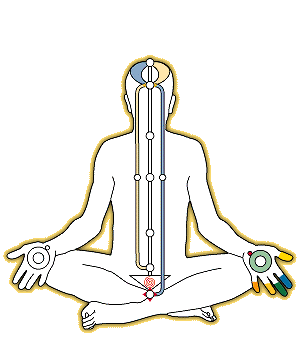
Thoughts
Blissful Music
3D Live Visitors Stats
Visitor Locations
Join Me

Calender
| M | T | W | T | F | S | S |
|---|---|---|---|---|---|---|
| 1 | 2 | 3 | 4 | 5 | 6 | 7 |
| 8 | 9 | 10 | 11 | 12 | 13 | 14 |
| 15 | 16 | 17 | 18 | 19 | 20 | 21 |
| 22 | 23 | 24 | 25 | 26 | 27 | 28 |
| 29 | 30 | 31 | ||||

